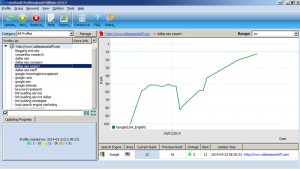This is the most common question we get. Unfortunately it’s a tough one to answer without knowing all the facts about your business and current website. There is no hard answer that will cover every business because your business is unique, your market is unique, your website is unique, your competition is unique.
 But if I had to give an answer:
But if I had to give an answer:
It generally takes two to three months for most websites to rank for their target keywords that are currently not ranking well. That being said, here are a few factors that will shorten or lengthen that time:
- How long has your website been live?
- How many geographic areas are you targeting?
- How many competitors do you have in your markets?
- How are your competitors doing in those markets?
- What’s the current state of your site’s Technical SEO?
- How much effort do/can you put into your SEO strategy?
…and a few other factors.
The only way to get this question answered with any certainty is have an SEO Consultant review all these factors. Fortunately we do that for free – technical site audit, competitor research, market research for your services, etc.
SEO Budget
We all know you get what you pay for. Getting your site to rank in the top spots for your keywords takes effort. IF it was easy everyone would be at the top. But they really wouldn’t be cause there’s only one top spot…
SEO, and more encompassing, digital marketing, is a long term strategy of content, links, technical aspects, social media, third party posting and over 200 other factors Google looks at when deciding where to rank your site. Of course some factors weight heavier than others and those areas of SEO is where to start when ranking your website.
Technical SEO Rankings
If Google can’t read your site or if your site is presenting information in an unorganized factor you’re not going to rank so that’s where we start. We look at things like on-page errors, canonical tags, 4xx and 3xx issues, etc etc etc… Once those are corrected we can move to on page factors.
URL Structure
Your URL structure is the basic road map and hierarchy of your site. It helps Google understand the relationship between pages. For example if you sell dresses, shoes and belts in different colors and sizes you’d want to make sure Google understands there are levels to your products. Such as /dresses/red/ or /shoes/athletic/white.
Content
Next comes content – Your content should reflect the URL structure, so in the examples above the content would be about red dresses (not blue or black or dresses in general) and white athletic shoes.
Interlinking
Linking from one page to another reinforces the linked page’s purpose and should be the same as the URL structure and content. You’d want to mention you also sell little black dresses and link to the black dresses page.
Putting it all together
You can probably imagine how confusing this can get once you add up all the variations or products or services with URLs, linking, content and other factors. The best place to start is with your home page and slowly work your way through your site focusing on higher priority products, services or information.
Where to Start?
Simply put – Call one of our SEO Consultants in Garland and we’ll give you a site evaluation for free with no obligation. We’ll spend time explaining what you need to do to get your site ranked better. You can do it yourself just like you can change your own oil or patch your roof. You may be great at it or you may decide it’s more cost effective to let a professional handle the details…
